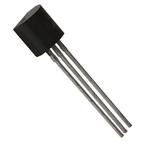下载

Application Note 5
Issue 2 February 1996
Super E-Line Applications in Automotive
Electronics
David Bradbury
Car buyers are now demanding greater
and greater sophistication in their
purchases, which along with extra safety
features, pollution controls, security
systems and manufacturing cost-cutting
measures, are leading to an ever-
increasing use of electronics in
automobiles. Automobile electronics
have extended from the occasional
radio, to cover every major area within a
vehicle. Engine management, fuel
injection system controls, transmission
controls, anti-lock braking systems,
electronic displays, warning systems,
etc., are just a few examples of the wide
range of electronic systems that can be
presently found in modern cars.
Many of these systems involve high
current loads such as relays, solenoids,
lamps, displays, motors and audible
warning systems. These require one or
more power transistors to interface
between the controlling logic and the
load. This brief note explains some of
the major problem areas in selecting
devices and circuits for automobile use,
and demonstrates the use of the Zetex
Super E-Line range of transistors in
some practical examples.
Problem Areas
The hazards for power devices in
automotive electronic systems are both
mechanical and electrical. The
mechanical hazards centre on the
extreme operating temperature range
endured by the devices.
To help designers evaluate the
performance of Super E-Line transistors
as temperatures vary, Zetex can supply
a wide range of temperature-related
data on both standard and special
characteristics. Figure 1 shows the
standard data sheet V
CE(sat)
against I
C
graph for a ZTX602 Super E-Line
Darlington transistor. Note how the
characteristics are shown for a range of
temperatures. Even when this data is not
given on the data sheet, Zetex can
supply this quickly for customers who
require such information.
Mechanical Requirements
Passenger compartment temperatures
can vary from - 40°C to + 85°C with the
engine compartment ambient reaching
as high as 120°C. High ambient
temperatures place serious constraints
AN 5-1
Replacement of Large Packaged Transistors with an Enhanced TO92
Product








